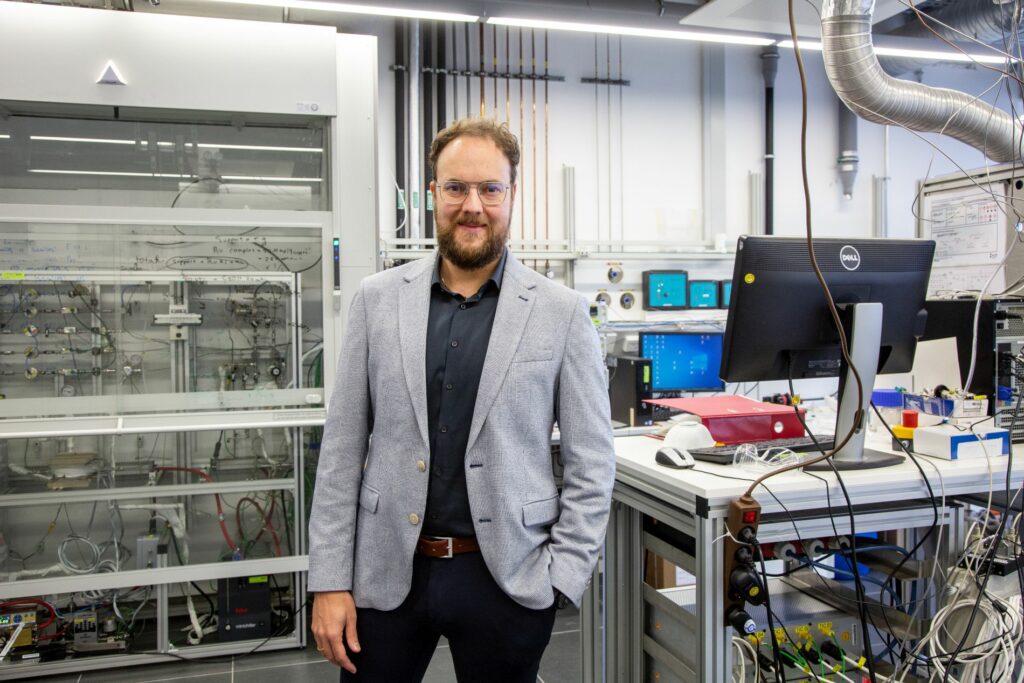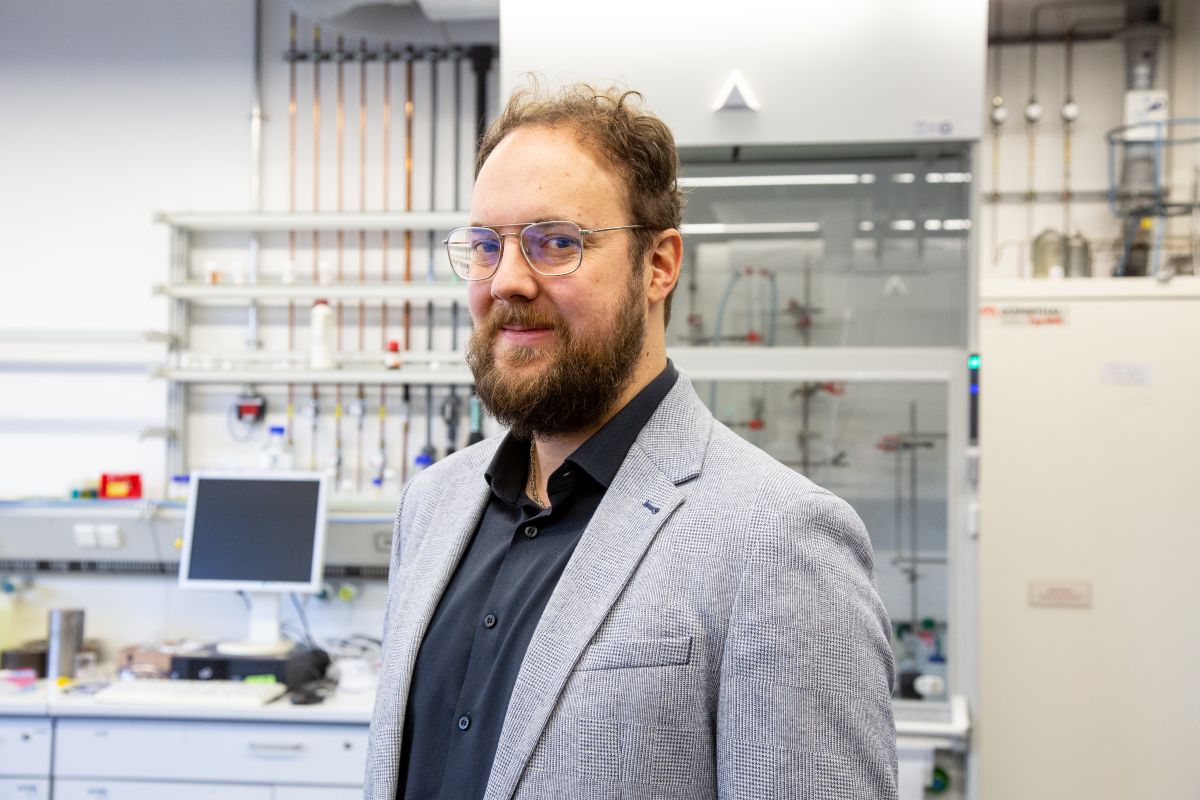Researchers at FAU hope to develop a new procedure aimed at gaining pure hydrogen from biological waste. Many of the methods used to date require high temperatures of 600 degrees Celsius and more. They are therefore not particularly suitable for decentralized use, for example on farms. However, that is precisely where large quantities of suitable residue is generated, for example as a by-product of keeping livestock or harvesting crops.
The Federal Ministry of Education and Research (BMBF) has now approved a new junior research group at FAU that is to develop and conduct research into an alternative means of production. The group is led by chemical engineer Dr. Patrick Schühle. Approximately 3.2 million euros in funding will be provided to FAU over the next six years.
Hydrogen as a clean energy carrier
Hydrogen is considered a clean energy carrier. When it burns, it does not release any emissions that are damaging for the climate, all it leaves behind is water. The gas can be produced from several different raw materials. Hydrogen production from organic waste is particularly environmentally friendly. Such organic waste includes, for example, sawdust from sawmills, straw, manure and silage.
Dr. Patrick Schühle, head of the working group “Catalytic systems for chemical energy storage”
“Until now, high temperatures of 600 degrees or more have been required to gain hydrogen from waste materials such as these,” explains Dr. Patrick Schühle from the Chair of Chemical Reaction Engineering. “Plants for generating hydrogen are particularly efficient when they are used to handle very large quantities of biomass. They are less suitable for use at the site where the waste is generated.” The head of the working group “Catalytic systems for chemical energy storage” at FAU wants to remedy this solution. He would like to find an alternative procedure that works at temperatures below 150 degree Celsius and that only generates a few unwanted by-products. “Our aim is a method that can function efficiently on a farm,” he explains. “In addition, the hydrogen that is produced ought to be as pure as possible. That poses problems for some of the procedures currently in use today.”

New junior research group approved and granted funding of over three million euros
The Federal Ministry of Education and Research (BMBF) has now approved a new junior research group headed by Schühle to make this vision a reality. The group has been awarded more than three million euros in funding, and it is due to be launched officially on January 1. The chemical engineer can then focus entirely on this project for six years. He intends to build on a procedure that is already in commercial use: The company OxFA from Scheßlitz near Bamberg created a small reactor several years ago that is used to generate formic acid from waste biomass. The company is a partner in the new project. “We want to establish a process chain that can generate hydrogen from this formic acid,” explains Schühle.
One objective: To develop new catalysts
One important milestone along the way involves the development of new catalysts. These are substances that facilitate and accelerate a reaction without being consumed themselves. “We focus on solid state catalysts – these are usually metals that we modify accordingly,” explains Schühle. “We bind substances known as promoters to their surface to accelerate the splitting of hydrogen from formic acid.” He has high hopes for phosphorous as a promoter. This would also also have the added advantage of stabilizing the catalyst. It is important that catalysts should be able to function effectively over as long a period as possible without having to be regenerated.
Producing hydrogen alongside milk or crops
First of all, the junior research group will conduct experiments in the laboratory to find a process that is as efficient, cost-effective and easy to handle as possible. This is just the first step, however. “We are also planning to build a demonstration plant,” adds Schühle. “It should be capable of processing a wide range of different types of organic waste that is generated in practice. We also want to use it to handle larger quantities than is possible at the laboratory scale.” If everything goes well, farmers may be in a position in ten or fifteen years time to not only produce milk or crops, but also hydrogen.
Further information:
More information on the working group: www.crt.tf.fau.de/katalytische-systeme-fuer-die-chemische-energiespeicherung
Dr. Patrick Schühle
Chair of Chemical Reaction Engineering
Phone: +49 9131 85 67417
patrick.schuehle@fau.de

